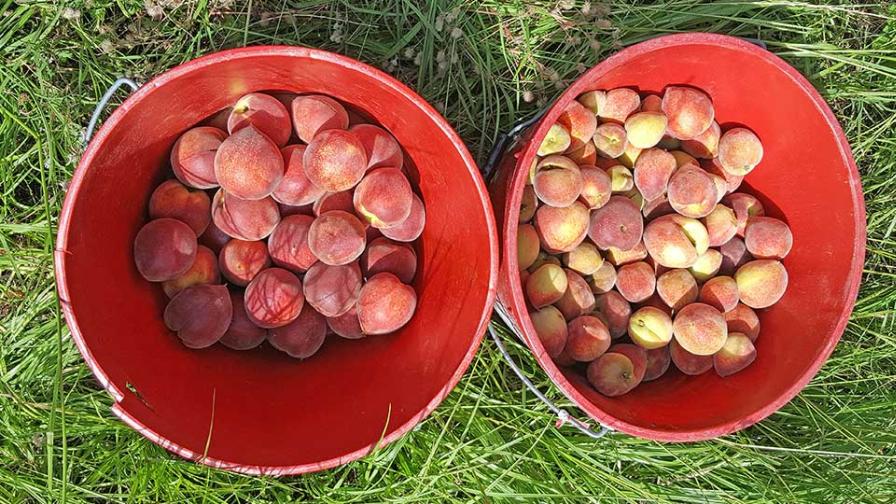Navigating the Ups and Downs of Peach Production in the Southeast U.S.
This year, all the weather news coming out of Georgia pointed to “Peach Armageddon.” This created an environment of reflection and retrospection for researchers, growers, and anyone involved with the industry. But Georgia was not the only state affected by the weather this year. South Carolina and Alabama peach crops dropped as well, cutting a significant percentage of total U.S. peach production.
Middle Georgia had a warm winter, which resulted in a reduced number of accumulated chill hours. This meant we had symptoms of lack of chill, such as delayed bloom, for our higher chill cultivars — >700 chilling hours (ch).
We also incurred a hard frost from March 12-14 that killed almost everything. Most of the cultivars were already in full bloom, except the ones that were lagging because of the lack of chill. We were about two weeks ahead of our normal bloom because of the warm winter, so cultivars that had enough chill came out of dormancy pretty quickly. Cultivars that still had a crop after the freeze were struggling because of the lack of chill, which led to a delayed bloom and reduced fruit set.

Certain peach cultivars yield a higher number of fruit that were not properly pollinated and are small (right bucket) in comparison with the standard commercial fruit (left bucket).
Photo by Dario Chavez
This year, we came to face two big issues that define — and will continue to define — fruit production: chill accumulation and freeze events. These are two impeding forces shaping our industry in the Southeast, and I believe each will be of importance for other regions of the U.S.
On one hand, chill defines our cultivar adaptation. If we have a cultivar with a low chill requirement (<500 ch) in a location such as middle Georgia (average accumulation ~800 to 900 ch), it will bloom relatively early, making it highly susceptible to freezes. On the other hand, if we go for a higher chill cultivar (>800 ch) to delay bloom and reduce our potential of losing a crop due to a freeze, we may end up with a cultivar not adapted to the local conditions.
THE CHILL SITUATION
Growers have been moving the cultivar groups they grow to chill groups more amenable to their location. This is, of course, a constant shift. It means at any point, growers may still have some acreage with specific chill groups that they may feel are not best suited for their location.
However, these cultivars are still maintained because they remain productive. On the other hand, public and private institutions are trying to identify and optimize compounds to break dormancy, helping with the issues of lack of chill. This is potentially a short- and medium-term response to this issue.

Lack of chill symptoms, overextending bloom, and limiting vegetative and flower bud break.
Photo by Dario Chavez
In the long term, we are excited about upcoming cultivars from breeding programs targeting the lower end of the chill groups adapted to the region. These cultivars have proven productive in years short on chill hours.
USDA’s Scion Peach Breeding Program in Byron, GA, led by Dr. Chunxian Chen, has released three cultivars in the past five years, and other material will be released in the upcoming years.
FREEZE ISSUES
There are technologies available for freeze protection such as overhead irrigation and wind machines. These technologies face some economic and sustainability challenges due to inherent geographical variations in the production zones and acreage. In addition, a new technology called nanocellulose was reported in recent years as a possible technology that could protect plant material from the effects of a freeze.
Washington State University researchers have reported promising results in cherries and apples. Currently, other universities, including my own University of Georgia, have been evaluating the use of different commercial nanocellulose materials for freezing protection in other crops.
In our results for peach, nanocellulose materials showed encouraging results, but several questions in deployment, consistency, and reliability still need to be addressed. We will keep working to answer some of these issues in the future.
The future will present us with opportunities that will allow us to see peach production in a different light. I believe exploring the use of high-density plantings will help us to gain yield and allow us to deploy novel ideas more efficiently for freeze protection such as the use of protective structures.










